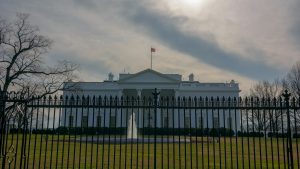Access to high-speed internet has become essential for economic growth, education, healthcare, and overall quality of life. Recognizing this, federal and state governments have launched nationwide initiatives to expand broadband infrastructure. However, recent developments at the federal level have introduced uncertainties that could impact these efforts. Despite this, many states are pressing forward with their broadband expansion plans, demonstrating resilience and commitment to connecting their communities.
In January 2025, the Office of Management and Budget (OMB) issued a memo directing federal agencies to pause all activities related to the obligation or disbursement of federal financial assistance, including grants and loans, until February 10, 2025. This pause was intended to allow agencies to review programs in light of new executive orders issued by President Trump, aiming to reassess funding priorities.
This sudden funding freeze has created uncertainty for programs like the Broadband Equity, Access, and Deployment (BEAD) initiative, which had allocated $42.5 billion to expand broadband infrastructure in underserved regions. Analysts have expressed concerns that such pauses could erode trust in national broadband initiatives and delay critical projects to close the digital divide.
Overcoming Federal Hurdles
In response to federal uncertainties, several states have taken proactive measures to continue their broadband expansion efforts:
-
Michigan: The Midland County Internet Connectivity Committee is actively applying for state funding through the BEAD program, with Michigan set to receive over $1.5 billion. The state will cover 75% of broadband installation costs, with the remaining 25% matched by Internet Service Providers (ISPs). Notable ISPs, including 123Net, LakeNet, and Charter, are expected to submit proposals. Additionally, Midland County plans to offer up to $3 million in municipal bonds to support these projects.
-
Texas: The Texas Senate has commenced its 89th Legislative Session, which is focusing on infrastructure development. The Broadband Development Office has awarded over $700 million to connect underserved areas, benefiting more than 93,000 locations across the state, particularly in Senate District 3.
-
New York: Despite challenges, New York invests in municipal broadband projects. For instance, Syracuse secured a $10 million grant from the state’s Municipal Infrastructure Program to expand broadband access. However, this initiative faced criticism for potential overbuilding, as some areas already had adequate service. This underscores the need for precise data collection and targeted investments to ensure resources are directed to truly underserved communities.
A Collaborative Approach
States are increasingly recognizing the value of collaborating with private entities to accelerate broadband deployment:
- AT&T’s Investment: AT&T has experienced a significant turnaround, with its stock surging 60.5% over the past year. The company attributes this success to a focused strategy on becoming the nation’s premier communications company, including reducing debt, divesting media assets, and investing heavily in fiber and wireless infrastructure. AT&T plans to return $40 billion to shareholders through dividends and share buybacks, aiming to lead in fiber deployment and achieve market share leadership by 2029.
While state initiatives are commendable, several challenges must be addressed to ensure the success of broadband expansion:
-
Data Accuracy: Accurate data collection is critical for efficient broadband policy implementation. States are deciding how to use BEAD and Digital Equity Act (DEA) funds to establish affordable broadband infrastructure and expand access to devices and digital skills resources. Monitoring and evaluating these programs are essential for sustaining efforts toward universal broadband access.
-
Affordability and Digital Literacy: Beyond infrastructure, addressing affordability and digital literacy is crucial. Despite significant investments, many Americans still face affordability issues and lack digital literacy, perpetuating the digital divide. Reallocating funds toward affordability and digital literacy programs can make a more significant impact.
-
Federal-State Coordination: Uncertainties at the federal level necessitate robust coordination between federal and state governments. Ensuring alignment in priorities and funding strategies is vital to maintaining momentum in broadband expansion projects. The recent federal funding freeze has highlighted the need for clear communication and contingency planning to mitigate potential disruptions.
Despite challenges posed by federal funding uncertainties, states demonstrate resilience and determination in advancing broadband infrastructure projects. Strategic planning, state-funded programs, and public-private partnerships ensure that all communities, especially those in rural and underserved areas, can access high-speed internet. Continued collaboration, accurate data collection, and a focus on affordability and digital literacy are essential to bridge the digital divide and promote economic growth and social inclusion nationwide.



